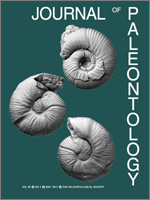The early Paleocene Purgatorius Van Valen and Sloan is the most primitive plesiadapiform primate yet discovered, mostly known from middle to late Puercan strata in Montana, deposited during the interval C29N of the geomagnetic polarity time scale. Here we describe Purgatorius coracis n. sp. from the Ravenscrag Formation, at the Rav W-1 horizon, Medicine Hat Brick and Tile Quarry, southwestern Saskatchewan. This horizon occurs within C29R, making P. coracis the earliest known primate, while strengthening the evidence that plesiadapiforms, and hence primates, originated and underwent their initial evolutionary diversification in North America. Most North American mammalian local faunas correlating with C29R have been assigned to the Pu1 (earliest Puercan) interval zone, but the taxonomic composition of the mammals accompanying P. coracis at Rav W-1 more resembles local faunas of Pu2 age. The occurrence at Rav W-1 of Pu2 aspect mammals within C29R agrees with similar occurrences at the Hiatt and PITA Flats localities in Montana and North Dakota, also possibly correlated with C29R. The evidence from these three sites, all in the Williston Basin, suggests that in some areas of the Western Interior Pu2 aspect local faunas were coeval with those of latest Pu1 age, having evolved earlier than has commonly been assumed.
How to translate text using browser tools
1 May 2011
A New, Early Puercan (Earliest Paleocene) Species of Purgatorius (Plesiadapiformes, Primates) from Saskatchewan, Canada
Richard C. Fox,
Craig S. Scott
ACCESS THE FULL ARTICLE

Journal of Paleontology
Vol. 85 • No. 3
May 2011
Vol. 85 • No. 3
May 2011




